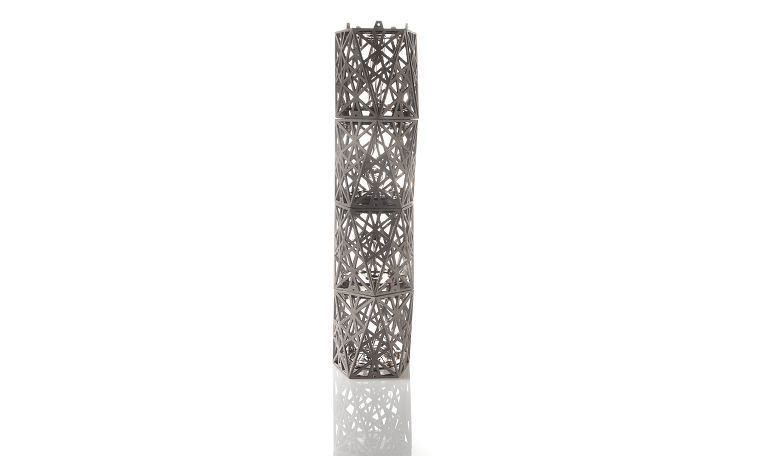Carnegie Mellon’s MoonArk, headed for the Moon in 2021, is more than a mini time capsule. This highly collaborative and massively integrated project is both a sculptural work of art and a tiny museum of humankind, intended to spark wonderment for future humans through poetically entangled visual narratives of the arts, humanities, sciences and technologies. It represents a snapshot of Earth today that we can send forward in time to allow future humans to learn something about us. Project director Mark Baskinger explains that the MoonArk, built to last thousands of years, will be a fossil object for future Moon landings, an artefact that will link the discoverer to the complexities of a distant era.
Impossibly small, broadly diverse, hyper-light, yet incredibly enduring, the MoonArk is designed and engineered to last thousands of years to project humanity in a most beautiful and highly significant way.
Lowry Burgess, professor of art, renowned space artist and initiator of the MoonArk project, described it as a repository of human culture, integrating aspects of the arts, humanities, sciences and technologies into a modular sculptural form when he spoke to Fortune magazine back in September 2005. “If we are to move human beings into outer space, we are going to have to move their culture with them,” he said.
Comprised of four independent, two inch high by two inch diameter chambers, it contains hundreds of images, poems, pieces of music, nano-objects, mechanisms and earthly samples intertwined through complex narratives that blur the boundaries between worlds seen and unseen. It is designed to direct our attention from Earth outward, into the cosmos and beyond and reflect back to Earth as an endless dialogue that speaks to our context within the universe.














